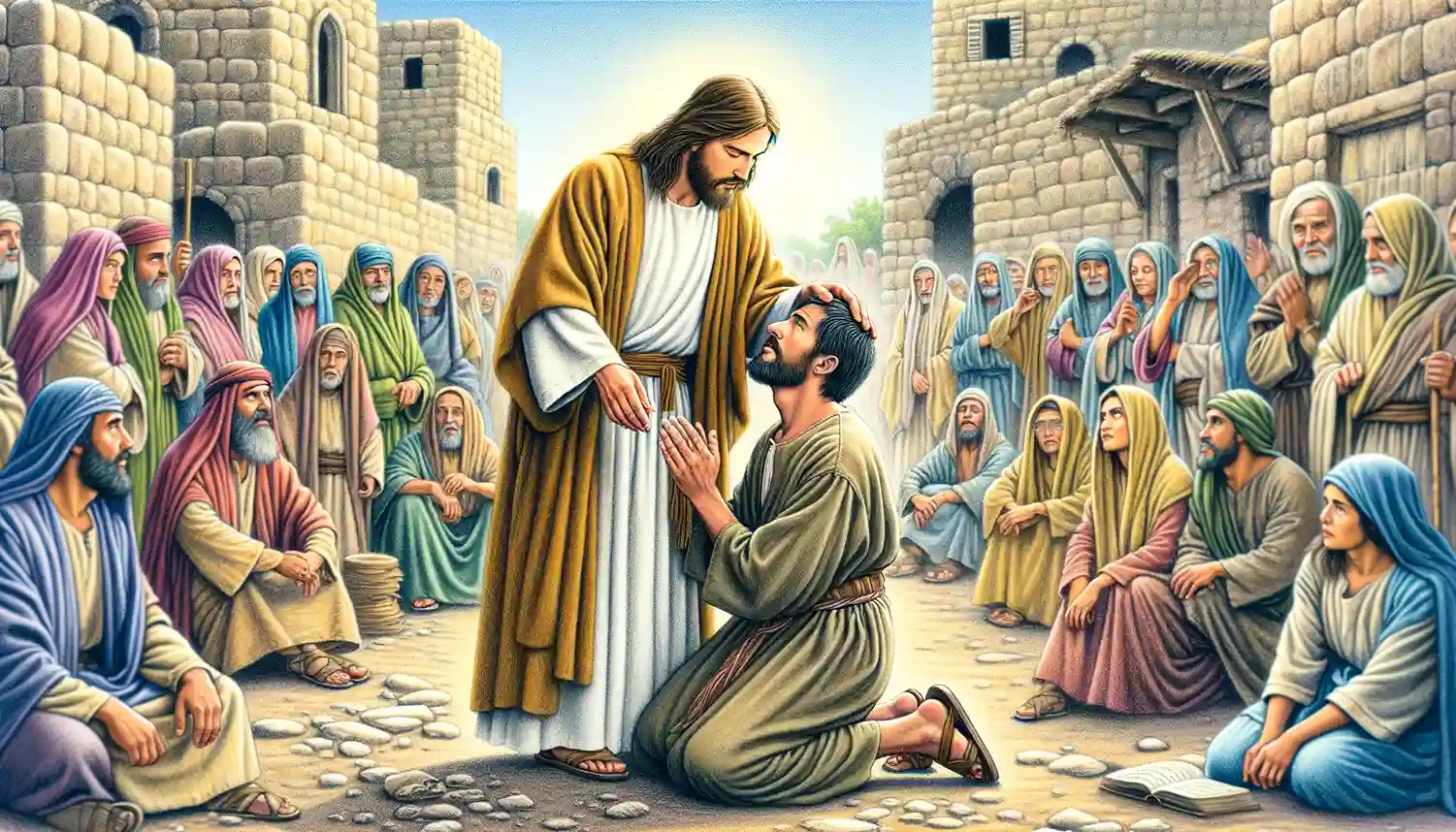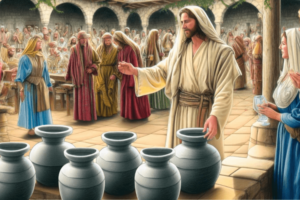
Jesus’ Healing of the Man Born Blind
In the Gospel of John, Jesus performs a profound miracle by healing a man who was born blind, using mud made from His saliva—an act filled with symbolic meaning and leading to significant spiritual and social repercussions.
Short Quick Facts about Healing a Man Born Blind
- Miraculous Method: Jesus employed an unusual method by making mud with His saliva and applying it to the blind man’s eyes.
- Symbol of Illumination: The miracle was not only a restoration of physical sight but also symbolized spiritual enlightenment, shedding light on spiritual truths.
- Sabbath Controversy: The healing led to controversy since it was performed on the Sabbath, sparking debate among the Pharisees about Jesus’ adherence to religious laws.
- Social Impact: Following the miracle, the healed man faced intense scrutiny and questioning from religious leaders, which tested his newfound belief.
- Confession and Rejection: Ultimately, the man acknowledged Jesus as a prophet and later as “the Lord,” reflecting his spiritual journey, which resulted in his social ostracism.
Context and Narrative
The account of Jesus healing a man born blind is found in the Gospel of John, chapter 9. This miracle is unique not only because of the method Jesus uses but also for its deep theological implications. Unlike other healings, this event is recorded in great detail, suggesting its importance in the narrative of John’s Gospel, which emphasizes Jesus as the Light of the World.
Method and Symbolism
Jesus’ method of healing—using mud made from saliva and applying it to the man’s eyes—echoes the creation motifs found in Genesis, where God forms man from the dust of the ground. This act signifies a re-creation or a giving of new life, not just physically but spiritually. The use of mud and saliva, elements considered ordinary or even unclean, underscores the idea that Jesus can use humble means to accomplish divine purposes.
Sabbath Controversy
This miracle sparked significant controversy because it was performed on the Sabbath. According to Mosaic Law, work was forbidden on the Sabbath, and the Pharisees considered healing as work. Jesus’ deliberate act of healing on the Sabbath challenges these interpretations and confronts the legalistic attitudes of the religious leaders. This confrontation is a recurring theme in John’s Gospel, pointing to a deeper understanding of what it means to fulfill the Law through love and mercy.
Social and Religious Reactions
The reaction to the miracle reveals various societal and religious tensions. The neighbors and bystanders are amazed but uncertain, the Pharisees are divided and skeptical, and the parents of the healed man are fearful of being ostracized by the Jewish community, as John notes that anyone confessing Christ would be put out of the synagogue. These responses illustrate the widespread impact of Jesus’ miracles on different facets of Jewish society and highlight the growing polarization regarding Jesus’ identity and mission.
Spiritual Illumination
Beyond physical healing, this miracle is laden with spiritual symbolism. John explicitly frames this event with Jesus’ statement: “As long as I am in the world, I am the light of the world.” The physical restoration of sight to the blind man parallels the spiritual enlightenment that Jesus brings. The man’s progressive recognition of Jesus—from calling him a mere man, then a prophet, and finally worshiping him as Lord—mirrors the journey from blindness to spiritual sight, emphasizing the transformative power of encountering Christ.
Theological Insights
Theologically, this narrative emphasizes the idea that Jesus fulfills and transcends the Law. His actions on the Sabbath signify a new interpretation of the Law centered on compassion and human need. Furthermore, the story critiques the spiritual blindness of the religious leaders who fail to recognize Jesus’ divine authority, contrasting with the blind man who comes to see both physically and spiritually.
Summary
The healing of the man born blind is a multifaceted event that intertwines physical healing with spiritual and theological depth. It challenges legalistic interpretations of the Law, offers a powerful metaphor for spiritual awakening, and provocatively claims Jesus’ role as the bringer of light in a world shrouded in spiritual darkness.



